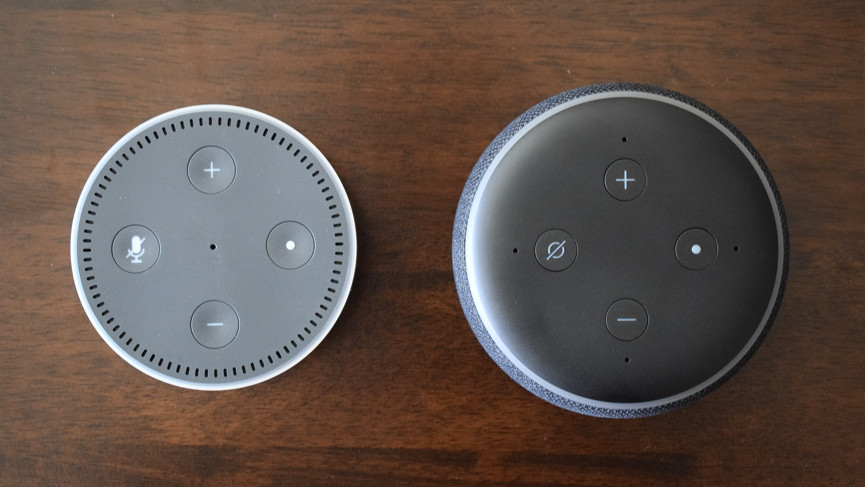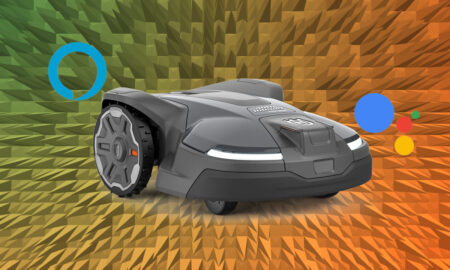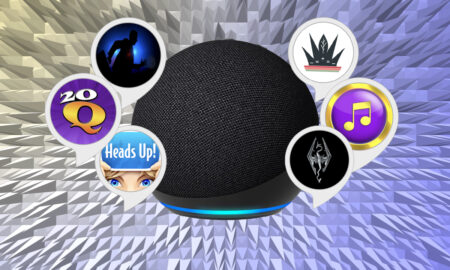Alexa, you're looking great
The Dot has been improved in all the right ways. It's a speaker you'll be proud to display in your home – not a bit of plastic to be hidden with shame – while the sound quality is a marked improvement. As a music player it still lacks, and the Echo Input will be a better option for many, but this is still the easiest way to get Alexa in your home.
Pros
- Much improved sound
- Now looks the part
- Alexa better than ever
Cons
- Bass still poor
- New power brick is big
- Undermined by Echo Input
The Echo Dot has long been Amazon’s most effective assault on the smart home. A small, puck-shaped smart speaker for £50 – often found on sale or bundled with some other smart home gadget – the Dot is the easiest, most affordable gateway to Alexa.
Updated model: Amazon Echo Dot 4th-generation review
Problem is, it’s really been more about the brains than the sounds. And when the Google Home Mini arrived, one year after the first Echo Dot, Amazon’s diminutive speaker suddenly looked (and sounded) worse. In fact, time has not been kind to the Dot at all, but Amazon is refreshing its smallest smart speaker into one worthy of 2018. And it still costs £49.99.
Amazon probably should have done this sooner, but hey, it’s here now, and we’ve been living with it for a week. Here’s how we’ve been getting along.

Amazon Echo Dot: Design
Put the old and new Echo Dots side by side and you almost wonder if we were too kind on Amazon when we reviewed the last model. Remember those fabric covers Amazon started selling so you could pay extra to make your Dot look a little less cheap and plastic? The new Dot apparently took some inspiration from that. It now comes with a fabric wrap, making it look like an Echo Plus that’s been stomped on. If that sounds like a criticism, it’s not; the new Echo Dot looks great.
It’s a little larger too, making way for a new speaker that’s now half an inch bigger. But the Dot is still small in stature: 3.9 inches in diameter and 1.7 inches in height. The speaker grille is gone from the top of the speaker, which now curves with the rest of the Dot, although the four buttons on top are the same: an action button, microphone mute, and volume controls.
On the back is a power jack and a 3.5mm aux jack that will let you connect the Echo Dot to another auxiliary-supporting speaker. We should talk more about the charger too. Where the last one used Micro USB, Amazon has opted for a proprietary cable this time around. As Amazon packs it in the box, going proprietary shouldn’t be a problem, but the power brick is now bigger too, taking up considerably more room on the wall or wherever you’re plugging it in. So clear some room – and try not to lose it.
But cable niggles aside, the Echo Dot is a marked improvement on the first in looks.

Amazon Echo Dot: Sound
As mentioned, the increase in size has allowed Amazon to beef up the speaker inside and the difference is pretty huge. You know that trick where you stick your phone in a cup to make the music sound louder? That’s pretty much how the old Dot sounded. Turned up, it was like blasting music through a soup can, becoming more distorted the louder it got.
That changes with the 2018 Dot. It’s cleaner, crisper and maintains its quality when the volume is pumped up. It’s also now firing out at 360 degrees from the sides, while the older one pushed the sound out through an ugly grille up top.
The latest Echo / Alexa devices reviewed
Amazon Echo (2019) review
Amazon’s Echo Dot with Clock review
Amazon Fire TV Cube (2019) review
Amazon Echo Show 5 review
Amazon Echo Sub review
Amazon Echo Wall Clock review
Amazon Echo Input review
Amazon Smart Plug review
Amazon Fire TV Stick 4K review
Amazon Echo Show review
Amazon Echo Plus review
Amazon Echo Studio review
But the Dot still falls down in the low end. I put on Joy Division’s Disorder and the bass reproduction was noticeably shoddy. You can tweak the bass, mid and treble in the EQ, either by asking Alexa to or using the app, but this didn’t seem to do much to solve the problem.
Good thing Amazon is now selling the new Echo Sub, huh? The new tower upgrades the sound of Echo speakers – most notably giving them deep bass – for an additional $130/£120. We haven’t yet been able to try this with the Echo Dot, but it’s safe to say it should round out the sound.
You can also connect two Echo Dot speakers together for a stereo pair. This gives you proper stereo separation and does make music sound better, but obviously still doesn’t compensate for the low end.

So which route should you go? If you’re after a smart speaker for great sounding music, the Echo Dot still isn’t in the race. Yes it sounds miles better than the last model, and a little better than the Google Home Mini to our ear, but for just $20 more than the price of a Dot and Sub together you could get a Sonos One, which also has Alexa built in (and gets Google Assistant later this year).
And the Echo Dot has Bluetooth as well, so there are two ways to connect the Dot to a better sounding speaker (it has aux too remember). But here’s where you’re presented with another choice. Amazon has thrown a bit of a spanner in the works with its new Echo Input, an even tinier puck that can connect to a speaker via aux or Bluetooth and give it the same Alexa powers – for $15 less. Think of it a bit like a Chromecast but with a microphone.
Our advice? The Dot is a great little speaker, but if music is your primary driver and you have a speaker that can connect with an Input, that’s probably the better option. That said, not having tested the Input yet we’re comparing it on paper. We’ll be trying one out soon.

Amazon Echo Dot: Alexa and the smart home
The benefit of smart assistants living in the cloud is that you’re going to get (mostly) the same experience across devices. The new Echo Dot is the same Alexa, from the voice to the smarts. Amazon has fortified its smart assistant considerably since we reviewed the last Echo Dot. That includes a new and improved Alexa app, which makes adding the Echo Dot a breeze.
Once your Dot is “plugged in” to your Alexa account, you’ll be able to ask it all the things, whether that’s, “Alexa, turn on the kitchen lights” or, “Alexa, what’s the capital of Costa Rica?” There are four mics on the top of the Dot (the last one only had one) making it more sensitive this time, and Alexa’s been pretty good at hearing me even with the volume turned up high. That’s important for when you need to get Alexa’s attention across the room.
Alexa is still beating Google Assistant in the number of supported smart home devices, though Google is working hard to close that gap. Amazon also has an edge in the Echo Plus, which packs in a Zigbee radio for bypassing the hub on supported smart home devices – something you won’t find in any of Google’s Home speaker. The Dot, however, will still require you to keep those hubs plugged in unless you have a Plus in your home too.






